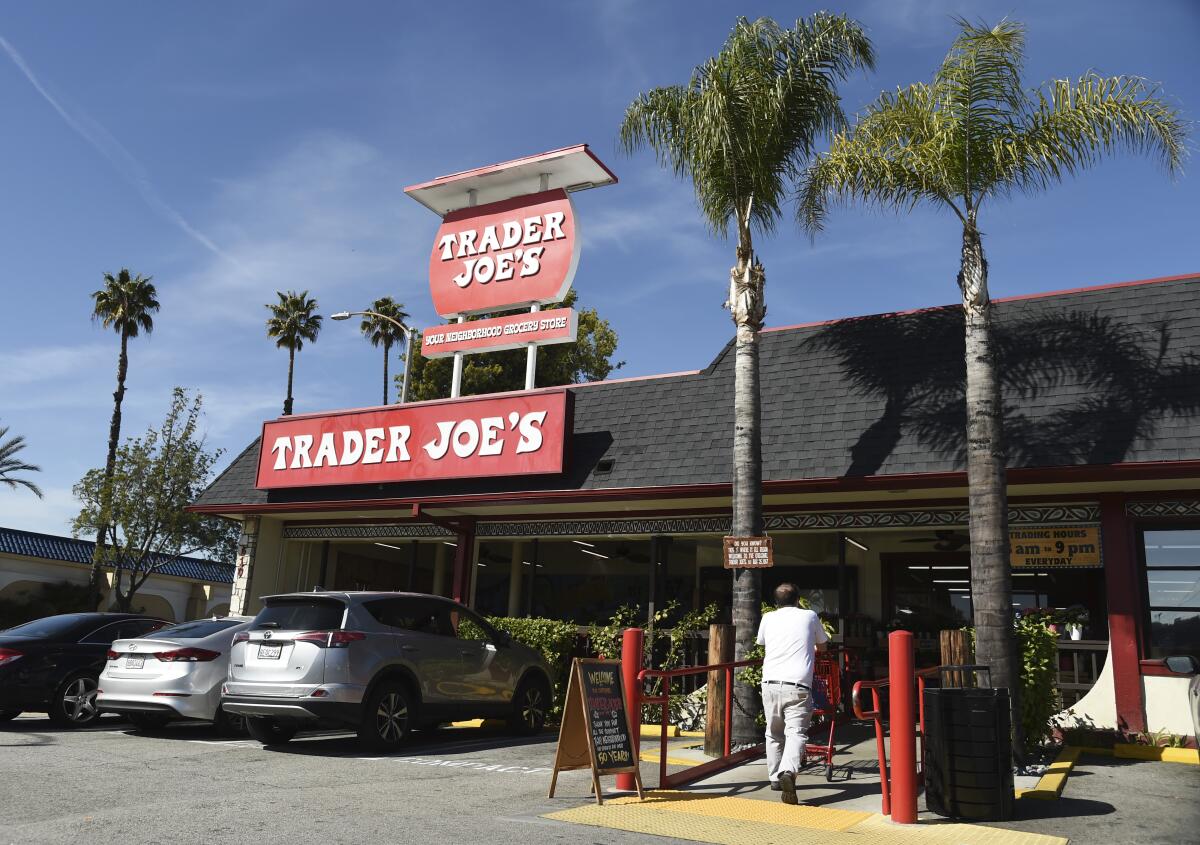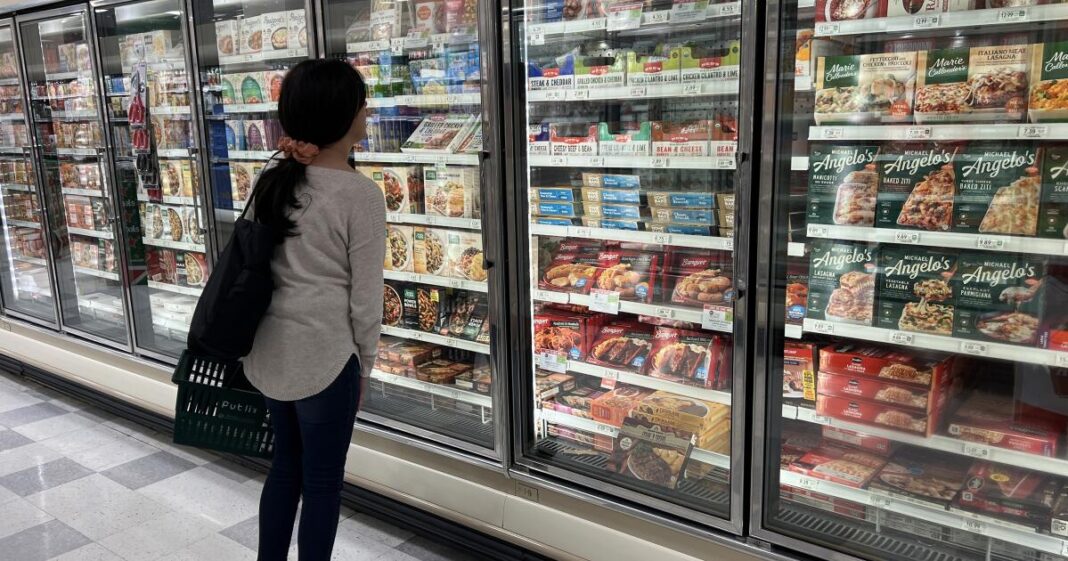Deli meats, grab-and-go salads and frozen meals are staples of the modern American diet — convenient and inexpensive options that shoppers readily toss into their carts during grocery runs.
But after hundreds of those products were flagged in major listeria-related recalls recently, nervous consumers have been left to scour their refrigerators for potentially tainted food as government inspectors try to piece together how the problems began.
Listeria contamination at a BrucePac processing plant this month and a deadly multistate outbreak linked to Boar’s Head liverwurst over the summer led to the sweeping recalls. All told, about 20 million pounds of meat and poultry products sold nationwide at Trader Joe’s, Walmart, Target, Ralphs and other businesses were affected, highlighting the public health challenges that come with producing food for the mass market despite significant advancements in sanitizing and testing.
“The messages that go out to consumers typically are, ‘We have the safest food supply in the world,’” said Barbara Kowalcyk, director of the Institute for Food Safety and Nutrition Security at George Washington University. “What these back-to-back recalls show is we aren’t where we thought we were.”
Although listeria has been the culprit in many food scares lately — on Friday, TreeHouse Foods issued a recall for hundreds of frozen waffle and pancake products for potential contamination — food safety experts said the string of incidents is merely coincidence.
“There’s no evidence at all to suggest that our food supply is less safe than before — in fact, I would argue for the opposite,” said Martin Bucknavage, a senior food safety extension associate at Pennsylvania State University’s Department of Food Science.
The safety of mass-produced food has improved dramatically in the last three decades, experts noted, thanks to better sanitization procedures, increased regulation and the use of technologies such as whole genome sequencing to help detect pathogens quickly.
But listeria, a common and stubbornly persistent type of bacterium, presents unique hurdles.
Unlike many other foodborne pathogens, it thrives in the cool, damp conditions found in processing plants. Unsanitary facilities can cause contamination, but the bacteria can also be introduced through raw ingredients, water, soil tracked into a plant on a worker’s shoe and even incoming air, said Brian Schaneberg, executive director at the Institute for Food Safety and Health at Illinois Institute of Technology.
“It is ubiquitous in the environment,” he said.
Making things worse, listeria can spread easily if food comes into contact with contaminated surfaces and multiply rapidly despite aggressive cleaning and sanitizing, according to the USDA. Listeria has been found in products including cold cuts, hot dogs, sausages, unpasteurized milk, soft cheeses, smoked seafood and raw vegetables and fruits.
Boar’s Head Virginia Ham was one of many products recalled as part of an investigation into a deadly listeria outbreak that began in July.
(Associated Press)
The U.S. Department of Agriculture’s Food Safety and Inspection Service has jurisdiction over the safety of meat, poultry and egg products. It requires manufacturers to develop and implement systems to prevent and reduce the occurrence and numbers of pathogens on their products and to decrease the incidence of foodborne illness.
Meat and poultry processing facilities are checked by federal inspectors at least once during every shift that a plant is in operation, according to a Food Safety and Inspection Service spokesperson.
For their part, food companies take preventive measures such as requiring workers to cover their shoes or step onto sanitized mats or into disinfecting foot baths whenever they enter a facility, and change their disposable aprons and gloves when moving from one production line to another.
They also conduct their own in-house testing, which can include extensive swabbing of surfaces, raw ingredients, finished products and areas where listeria is known to thrive, such as floor drains.
“No company wants to have an issue like this,” Bucknavage said, referring to the recent spate of recalls. Listeria’s ability to adapt and proliferate under varied conditions means “it’s an ongoing battle,” especially at large food-processing establishments like BrucePac, which churns out precooked, ready-to-eat meat and poultry products in huge quantities.
“You’ve got chicken juices, you’ve got people moving around, you have a lot of different types of equipment,” he said. “All of that has to be controlled down to the microbiological level.”
BrucePac and Boar’s Head did not respond to requests seeking information on how they conducted their safety tests before the recalls.
Every year an estimated 48 million people get sick from a foodborne illness, 128,000 are hospitalized and 3,000 die, according to the Centers for Disease Control and Prevention, which typically coordinates 17 to 36 investigations in multiple states each week.
Consumption of food contaminated with listeria can lead to listeriosis, a serious infection that primarily affects adults 65 and older, people with weakened immune systems, pregnant women and newborns. Symptoms include fever, muscle aches, headache, stiff neck, confusion, loss of balance and convulsions sometimes preceded by diarrhea or other gastrointestinal issues. It is the third leading cause of death from foodborne illness in the U.S., the CDC said.
The Boar’s Head outbreak, which began in July, has been linked to 59 hospitalizations and 10 deaths across 19 states. No illnesses have yet to be reported in the BrucePac and TreeHouse recalls.

TreeHouse Foods is recalling hundreds of its frozen waffle and pancake products for potential listeria contamination. The items were sold under various labels and distributed to stores including Trader Joe’s and Target.
(TreeHouse Foods Inc. via AP)
There’s also a steep financial cost. The economic burden of foodborne illness was estimated to be as high as $90 billion annually, according to a 2020 research paper published in the Journal of Food Protection.
Listeria is unusually hard to trace after an outbreak because it has a long incubation period — the CDC says it can take up to 10 weeks for some people to develop symptoms. Many people don’t seek medical attention after they become sick, and those who do generally have trouble recalling what they ate several weeks ago.
Boar’s Head, which produces and sells deli meats, cheeses and condiments, called the outbreak a “dark moment in our company’s history” in a letter to customers in September.
“Comprehensive measures are being implemented to prevent such an incident from ever happening again,” the Sarasota, Fla., company said.
Boar’s Head has been working with the USDA, state government regulatory agencies and food safety experts to determine what went wrong. The investigation is still ongoing, and the results will include “what needs to be improved and where policy changes are needed,” the Food Safety and Inspection Service spokesperson said.
Boar’s Head shared some preliminary findings last month, saying it had identified the root cause of the contamination as “a specific production process that only existed” at its facility in Jarratt, Va., and was used only to make liverwurst. As a result, it said it was permanently discontinuing the production of liverwurst and was closing the Jarratt plant for good.

An aerial view of the Boar’s Head processing plant in Jarratt, Va., that was tied to a deadly food poisoning outbreak in July.
(Steve Helber / Associated Press)
Boar’s Head also published a notice of suspension that the USDA sent on July 31, which laid out numerous “insanitary conditions” and other problems at the plant. Among them: beaded condensation dripping over products, employees moving racks of coolers between lines without changing personal protective equipment and a sample collected from a pallet jack that tested positive for listeria.
“Clear liquid was observed falling from a square patch in the ceiling,” the notice said. “A black fan was mounted to the ceiling and was blowing the leaking clear liquid into the Blast Cell Hallway, where 9 trees of uncovered Assorted Hams were stored.”
What these back-to-back recalls show is we aren’t where we thought we were.
— Barbara Kowalcyk, director of the Institute for Food Safety and Nutrition Security at George Washington University
Besides working with government inspectors to investigate contamination, food manufacturers also have to help track down products affected by their recalls, an unwieldy task in situations where hundreds of different items with various sell-by and best-by dates were sent to businesses around the country. In the BrucePac case, items were widely distributed to supermarkets, big-box discounters, wholesale clubs, restaurants, schools and other establishments.
Retailers like to say they have close relationships with their suppliers and buy only from vendors they trust. But issues still arise, leaving companies scrambling to get the word out to customers.
Trader Joe’s, which is in the process of recalling several of its private-label salads, wraps and other items made with ready-to-eat BrucePac products, says it does “daily work to make certain our products meet our stringent food safety expectations.”

(Chris Pizzello / Associated Press)
“We voluntarily take action quickly, aggressively investigating potential problems and removing the product from sale if there is any doubt about its safety or quality,” the company says on a food safety page on its website.
Yet another high-profile deadly outbreak was announced Tuesday, when the CDC issued a food safety alert after discovering an E. coli outbreak linked to McDonald’s Quarter Pounders; there are currently 49 cases across 10 states, including 10 people who were hospitalized and one who died. The CDC, USDA, Food and Drug Administration and public health officials in multiple states are now investigating.
Although inspections and investigations are shared responsibilities between food manufacturers and government entities, “the onus is really on the company,” Kowalcyk, of the Institute for Food Safety and Nutrition Security, said.
“If you look at the complexity of our food supply and the number of producers and the number of importers, it’s growing exponentially,” she said. “Do I think the agencies can do more? Yes. Do I think they have the resources that they need to do more? No.”
Food safety will “never be perfect because pathogens are living things and all systems fail,” she continued. “We’ve got to recognize we’ll never get to zero, but we can get pretty close and that’s what we should be striving for.”


